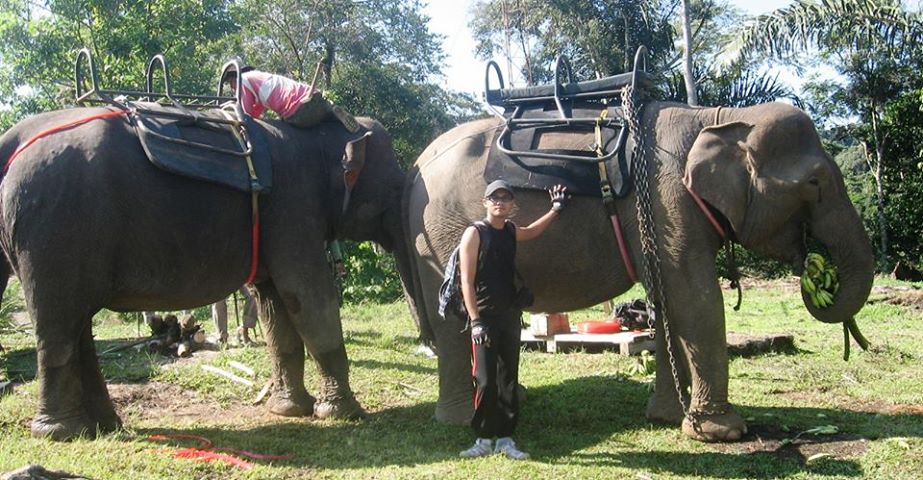Mun
Mun, unlike other portraits, is not directly connected to the CRUs. I chose to interview him because he represents an interesting outside perspective. He has worked on various projects related to tourism on the island Pulau Aceh. I met him for the first time when I was planning a trip to the CRU for the participants of a conference organized by Flora and Fauna International (FFI, see project description). I was looking for someone to come on our trip to help translate Indonisian to English, so that the particiapnts can share more information with the team and vice versa. Several translators had said they were available, but all cancelled successively. So, at the last minute I was very fortunate to be introduced to Mun, who accepted the challnge only 12 hours before departure. We spent five days at the CRU in Mane, which included a three day trek in the jungle. It was his first time at the camp and he quickly integrated into the team. He was a great help in improving the interaction between the participants and the staff. We became fast friends and he tagged along with me for a few days to the second CRU in Sampoiniet.
Mun is a very independent person, who is involved in some family business where he quickly learned English after the tsunami when many foreigners came to Banda Aceh. He loves working with tourists, meet new people, learn about different cultures, and share experiences. He has helped several journalists, who had been reporting in the region, and in 2006 he worked for LINA Association (League for Women’s Rights in Aceh). He has recently teamed up with his friend to try to develop toursim in Pulau Aceh island located on hour from Banda Aceh.
Despite these experiences, Mun had a vague idea of the richness of the environment in Aceh and had no particular interest in elephants. He grew up in a village where wild elephants created many conflicts, but they never directly involved his family, therefore he had “no opinion on the issue.” Following his stay at the CRUs, he confessed to be a little afraid of this huge animal, but then confessed to quickly, “fall in love with them, especially Rosa, (the baby elephant at Sampoiniet camp). They seem to be trying to communicate with us, they are fascinating animals.” It was after a long discussion with Hasballah (see portrait, camp’s coordinator in Mane) that he better understood the conflict between humans and elephants in Aceh. Today, Mun says that the people to blame are the ones who are constantly destroying the forest for man, it reduces the elephants habitat. He then said, “I understand that local people need land to cultivate, but in the region of Aceh, there is a lot of land. It is the government that should map the elephant habitat and make it a protected area. I know they can do it, but instead, the local people go where they want to go an take the land for free.” He told me the story of a place called, “point of water for elephants,” where villagers destroyed the forests for new plantations. For Mun, it isn’t right for those people to complian about the conflict with elephants because they knew they were destroying a place where elephants live. He ends by saying, “Aceh is a large area and there is enough room for everyone, so we don’t have to destroy the forest to open new areas.” When I asked him about his outside perspective on the effectiveness of the CRUs, he told me that he does not know enough about the tools used to mitigate conflicts. He also said he does not know enough about the educational program or the relationship of the team with the local population. However, he thinks that it might be useful for the field teams to receive training in order to learn how to communicate their knowledge with tourists and villagers that they interact with. He said he particularly believes in the education of youth, since it is them who will make the decisions in the future. Regarding the tourism potential of the camps, Mun says, “ it is a beautiful place and toursim could help by increasing the income of local people and help reduce the conflict with elephants.” He also said that, where the camps are located, especially Mane, used to be areas of high conflict during the civil war, which according to him, makes the situtaion more complicated to develop tourism. “It is very important to avoid the creation of a gap between the tourists, the CRU teams, the local population, and the entire population who will benefit from tourism.”

